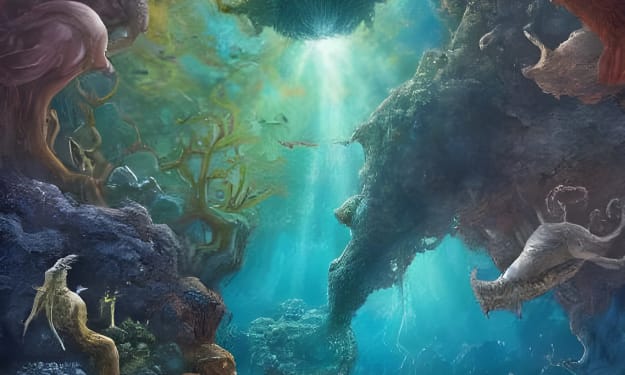Where is the world's largest creature? There is a seaweed in the shallow sea of Australia, has spread 180 square kilometers, living 4500 years old, still growing
The world's largest biological

How big is the largest plant in the world? Which one is it? When we see such a question, we may think of those huge trees, such as the world-famous Hypericum, General Sherman, etc. Some giant fir, fir, Australian eucalyptus, and other trees can grow to a height of more than 100 meters, the bottom diameter of 10 meters, the volume of the tree can reach thousands of cubic meters, and the weight of more than a thousand tons, but many friends know that the famous American "Ornithogalactis" mushroom is bigger. The mushroom is bigger, but a field study from Australia found that the world's largest plant should be a seaweed growing on the west coast of Australia.
The base of General Sherman's tree
Posidonia seagrass
The Australian Broadcasting Corporation (ABC) reported on June 1 that the country's researchers found the world's largest known plant, a Posidonia seagrass, beneath the waters off the coast of Western Australia - how big is it? Through days of measurements and inspections, researchers found that the Bohemian seagrass covered about 180 square kilometers of shallow water off the west coast of Australia and measured its age to be over 4,500 years old.
Researchers were to carry out other aspects of scientific research projects, but after arriving here found a huge area of underwater grassland, and found that most of the growth of which is Posidonia seagrass, and this seagrass look very similar, and then collected samples for its genetic testing, found that these seagrass leaves come from the same seagrass, or that this 180 square kilometers of underwater grassland Sinclair of the University of Western Australia are one of the researchers, she said in an interview with the ABC, "After looking at the data, I was really surprised, I never thought they were the same plant."
In addition, the researchers have deduced from genetic analysis and the diffuse distribution of the seagrass that the plant is no less than 4,500 years old, and that the plant "has been able to keep growing because it is environmentally friendly, can keep growing and expanding over a large area, and is undisturbed (by the genes of other seagrass plants)". The plant has been described as "a beautiful world heritage site." The research has been published in the Journal of the Royal Society, Series B.
This aquatic plant has a woody main stem and roots that are so strong and malleable that they can grow numerous blades of seagrass over thousands of years and remain largely connected to one individual plant.
Posidonia seagrass is also the longest-lived plant in the world. The longest life span of Posidonia seagrass is 100,000 years, and biologists theorize that if the environment and conditions are right and long enough, this seagrass can live up to 200,000 years or more. The secret of its longevity lies in the asexual reproduction of this marine angiosperm, which can keep spreading through the continuous division of meristematic tissues, which replaces the role of reproduction.
Some years ago, Spanish and Portuguese biologists found an 8-kilometer-long Posidonia seagrass, and Carlos Duarte, a biologist from the Spanish National Research Council, found a 15-kilometer-long seagrass that retained the same genes, saying that the plant's growth was very stable due to "the great genetic conservation capacity of Posidonia seagrass, which is resistant to any mutation. It is resistant to any mutations."
This is an advantage that has evolved as a result of its asexual reproduction, but biologists have also found that its genes can automatically adapt to local environmental changes and alter its growth patterns. the basic vitality of growth.
This Posidonia seagrass is probably still the largest single living individual known in the world. We all know that blue whales are big, but some giant trees are much bigger and heavier than blue whales, and some ficus trees can expand very large, but before this Posidonia seagrass was discovered, the world's largest organism was thought to be an Oregon mushroom with underground mycelium spreading over The underground mycelium spread over about 9.6 square kilometers of land, and together with the above-ground substrates, the mushroom is thought to weigh several thousand tons and has been considered the largest individual organism on the planet for many years.
But, the Posidonia seagrass off the coast of Western Australia, which has spread over 180 square kilometers of ocean, is much larger than this mushroom, and its total weight may be more than 100,000 tons, making it the largest single living organism known in the world.
About the Creator
Deljewitzki
Science is no national boundaries, but scholars has his own country






Comments
There are no comments for this story
Be the first to respond and start the conversation.